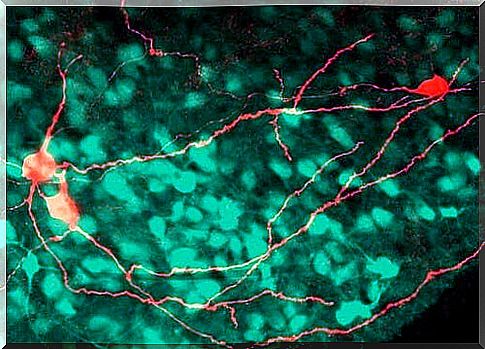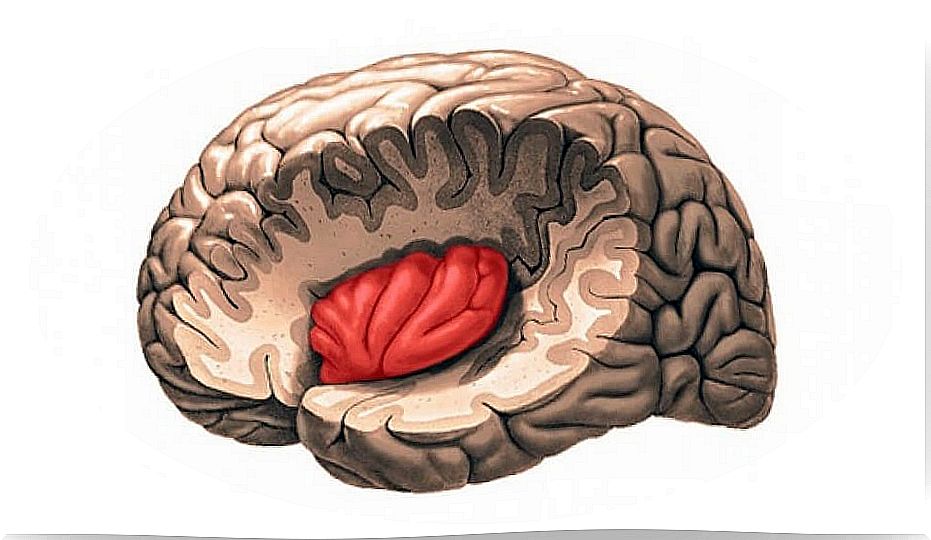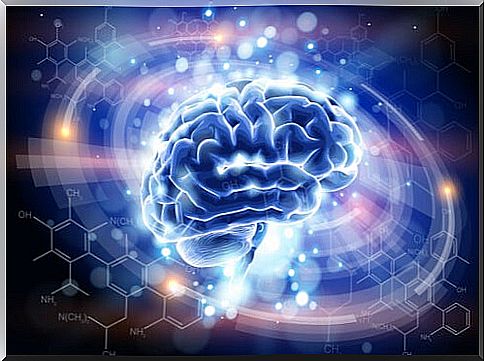The Insular Cortex And Its Relationship With Painful Events

Knowing that in our brain we have an area whose purpose is to make us learn from painful events, at least it is impressive. This brain structure is the insular cortex, an area located deep in the lateral surface of the brain, linked in turn to processes that also have to do with self-awareness and cognitive tasks.
Something that without a doubt we must admit is that the human being builds a good part of his learning from painful experiences. Thus, when we take, for example, a pizza from the oven, we already know which corner to avoid so as not to burn ourselves as we did just a few days ago. As children, we also learn early that certain objects cut.
We could give a thousand examples of those painful events that we have been through and from which we have learned. Obviously, we are not referring only to those experiences related to physical pain. Emotional pain also builds a good part of who we are and builds, in turn, that vital legacy that allows us to move forward with greater temperance and knowledge.
Therefore, the insular cortex stands as that essential structure in both humans and animals, capable of helping us not only survive, but also obtain lessons from each experience. Let’s learn more about it below.

The insular cortex and pain processing
People don’t get all of our learning from aversive experiences. The human being is not a robot that is limited to learning based on success / error, pain / pleasure stimuli. A good part of who we are, part of what we see, what we feel, what they transmit to us and those experiences that, without being painful or pleasant, trace who we are.
Now, we cannot deny that pain, in any of its forms, is a powerful teacher. Cactus that prick, surfaces that burn, objects and machines that we use carefully to avoid accidents, insects that sting, animals that bite … All these common realities in our everyday contexts are stimuli that our insular cortex has processed to give us concrete learning.
Now, how do you get it? What exactly does this brain structure do?
What is the insular crust
The insular cortex or insula is an area located deep in the lateral sulcus, and between the fissure that separates the temporal lobe from the parietal and frontal lobes.
One of the most interesting aspects of this structure is who it is connected to. We refer to the amygdala, that brain region linked to emotions and, especially, with the management of fear and the fight or flight instinct. In turn, the insular cortex is related to the following processes:
- Awareness.
- Emotional experiences.
- It helps us make decisions.
- Homeostasis.
- Motor control (hands, eyes, mouth, gastric motility …).

Pain, an important part of our life
Until recently, neuroscientists believed that our pain-related learning was processed by the amygdala. After all, it is this region that activates our avoidance, attack or defense behavior. She who warns us of the dangers and induces us the feeling of fear or alarm.
Now scientists in Ralf Schneggenburger’s laboratory at the Swiss Federal Institute of Technology in Lausanne point out something interesting. It has been discovered that it is the insular crust that sends us these “warnings”.
Now we know that it is the neurons in this area that, working in connection with the amygdala , allow us to associate a painful stimulus with an aversive experience. Furthermore, if a person lacked or had the insula affected, they would not experience a sensation of pain. Something that at first glance may seem positive to us, is actually a real problem.
The human being or the animal who does not feel the experience of pain is exposed to all kinds of risks. Pain, after all, is an alert system that informs us of a risk. If we do not avoid that danger, if we do not feel fear or pain, our quota of life would be particularly short.
Possible future treatments associated with the insular cortex
Knowing that the insula is responsible for processing pain and aversive learning is a breakthrough in neuroscience. Thanks to this discovery, we will be able to know more about how the experience of pain and fear is constructed. In addition, we may have more effective treatments for certain psychiatric disorders in the future.
We know, for example, that there are mental conditions where the person experiences excessive fear or pain. It has been observed that, in these cases, there is hyperactivity in the insular cortex. Something like this implies, among other things, that we could design more effective drug treatments for anxiety, depression or other psychological disorders. We will therefore be pending, since deep and detailed knowledge about the brain will lead to advances that will improve our quality of life.









